Head-To-Head: Toshiba Portege z20t Vs. Microsoft Surface Pro 3
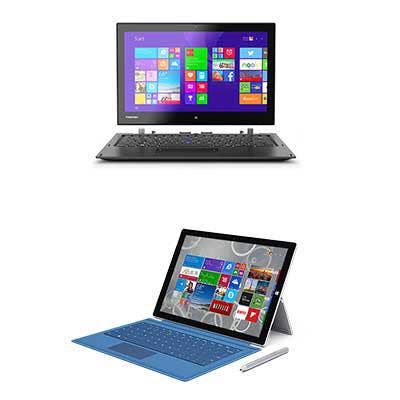
Portege z20t Vs. Surface Pro 3
When it comes to 2-in-1 devices, Microsoft's Surface Pro 3 is the best-selling 2-in-1 on the market today, with 55 percent market share in the U.S., according to research firm IDC. But being top dog is kind of like being the best gunslinger in the Old West -- every other day a competitor saunters into town to try to outshoot you.
Meet Toshiba's Portege z20t.
While this Portege is officially a 2-in-1, it is in a class of its own, giving Ultrabooks and thin-and-light laptops a run for their money. With this head-to-head comparison, we take a hands-on, close look at the $1,400 Portege z20t B and put it up against the closest comparable Surface Pro 3 model -- the $1,430 (with $130 keyboard) Core i5 model.
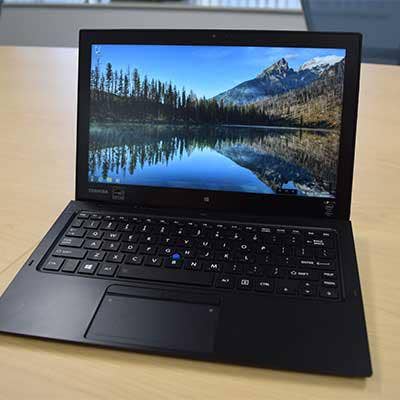
Chassis Smackdown
Toshiba's Portege z20t: The Toshiba Portege z20t is a thin-and-light class notebook hybrid 2-in-1 with a responsive, comfortable backlit keyboard. The screen docking mechanism is robust enough to allow this 2-in-1 PC to compete head to head with any clamshell notebook.
Weighing in at 3.3 pounds as a notebook, the z20t has a width of 11.8 inches and a depth of 7.6 inches, and is 0.85 inches thick. In tablet mode, the z20t slims down to 1.60 pounds and is 0.35 inches thick.
Microsoft Surface Pro 3: With its most recent iteration of the Surface, Microsoft brings to the table a solid notebook replacement with a unique adjustable kickstand. Paired with the optional full-sized backlit keyboard cover ($130), the Surface tempts even the most diehard laptop warrior to look twice at this 2-in-1 option.
The Surface Pro 3 weighs 2.42 pounds and is 0.55 inches thick with a keyboard. Without a keyboard, it is 0.36 inches thick and 1.76 pounds.
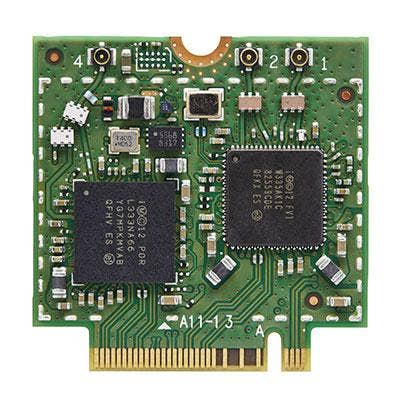
Processor Faceoff
Toshiba Portege z20t: Under the hood, the z20t sports Intel's power-sipping Core M-5Y71 processor, which includes Intel's AMT 10.0 integrated graphics. Compared with Intel's i5-4200U (used in the Surface Pro 3), the M-5Y71 microprocessor has 70 percent better power consumption.
Surface Pro 3: The comparable Surface Pro 3 to the z20t features an Intel Core 1.9 GHz i5-4300U processor with integrated Intel HD Graphics 4400. The Core i5 is based on the older Haswell architecture verses the z20t's Core M-5Y71 processor that's part of Intel's newer Broadwell Y family.
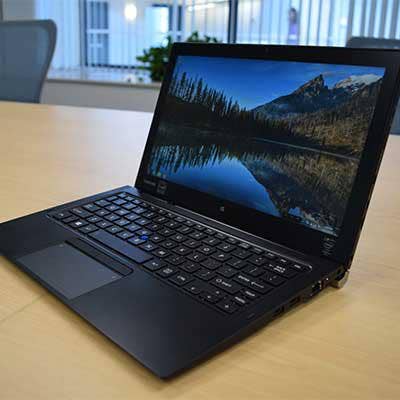
Battery Battle
Toshiba Portege z20t: The z20t's biggest selling point is its impressive 17-hour battery life claim. Toshiba achieves this long battery life thanks in part to the use of the Core M-class chip and the fact that the z20t's keyboard doubles as a battery. Used in tablet mode, the z20t has a 9-hour battery life. Add 8 hours more when it's docked with the keyboard.
Surface Pro 3: By comparison, the Surface Pro 3 boasts 9 hours of battery life with tasks such as Web browsing.
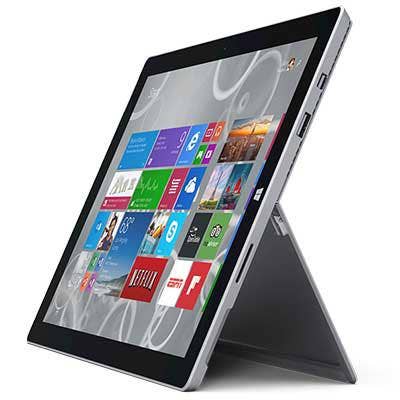
Port Play
Surface Pro 3: Ports are extremely important when it comes to stepping into the 2-in-1 class. After all, the 2-in-1 form factor appeals to people who want the best of both tablet and notebook worlds. The Surface Pro 3 has a single USB 3.0 port, a Mini DisplayPort and a microSD slot that supports up to 128-GB-capacity cards.
Toshiba Portege z20t: In tablet mode, the z20t is outfitted with a micro HDMI port, a micro USB port and a microSD card slot. The keyboard base contains a pair of USB 3.0 ports on the right side, and a full-size HDMI port on the left along with an Ethernet port.
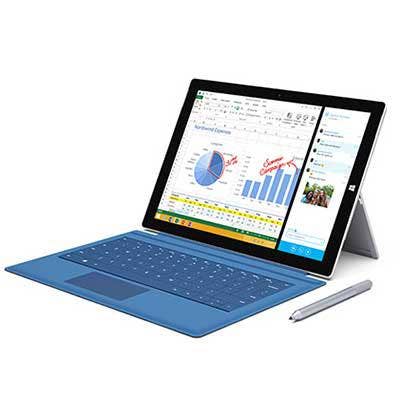
Screen Showdown
Surface Pro 3: With its 12-inch screen and native 2,160-by-1,440 resolution, the Surface Pro 3 delivers a superior LCD screen experience compared with the z20t. The Surface Pro 3 differs also in that it has a 3:2 aspect ratio, compared with the z20t's 16:9 aspect ratio, which tends to make the Toshiba tablet screen feel long when held in the Portrait orientation.
Toshiba Portege z20t: The z20t's 12.5-inch display has a 1,920-by-1,080 resolution and a 16:9 aspect ratio. The touch screen, which has a matted finish that reduces glare and reflections, can be controlled with an included Wacom digitizer stylus that tucks away nicely behind the screen. The Surface Pro 3 also uses its own branded digitizer stylus.
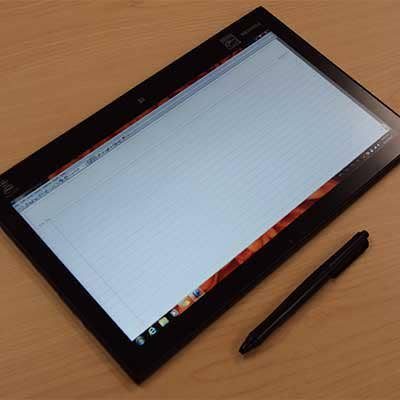
Spec Showdown
Toshiba's Portege z20t B: Beyond the processor the z20t features 8 GB of RAM, a 256-GB solid state drive (SSD), Bluetooth 4.0 and Windows 7 Professional (Windows 8.1 optional), and a 5-megapixel camera with auto-focus, digital zoom on the back and a 2-megapixel camera with microphone on the front.
Surface Pro 3: The comparable Surface Pro 3 is loaded with 256 SSD, 8 GB of RAM, running Windows 8.1 Pro. The tablet has 5 MP and 1080p HD front- and rear-facing cameras.
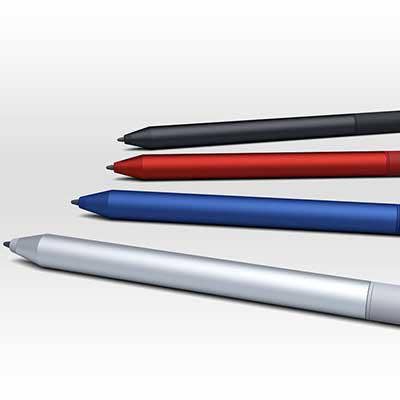
Touch Screen & Pens
Surface Pro 3: What sets both the Surface Pro 3 and z20t apart from a crowded 2-in-1 field is that both pay attention to delivering a superior stylus experience. For Microsoft, marrying the pen with a slate has been a long-sought-after goal. Microsoft calls its active capacitive pen simply the Surface Pen, which is included in the price of the Surface Pro 3. It supports 256 levels of pressure sensitivity and uses palm-blocking technology so you can draw, take notes and mark up documents.
Toshiba's Portege z20t: Toshiba's active digitizer pen also includes palm-blocking technology. The hardware itself is based on a Wacom digitizer stylus. A nice touch from Toshiba is an included "emergency" stylus that tucks away nicely behind the screen for use when needed.
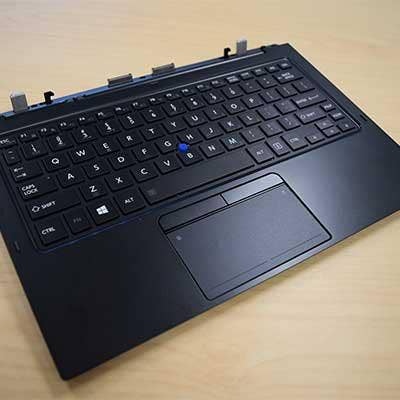
Keyboard Crunch
Toshiba's Portege z20t: The keyboard is king when it comes to luring laptop loyalists to use a 2-in-1 PC. Using Toshiba z20t's keyboard is virtually indistinguishable from using any other full-sized traditional clamshell keyboard. The spill-resistant, LED-backlit, touch pad-sporting keyboard is great, but because it doubles as a battery and hosts so many ports -- but unfortunately, it adds 1.7 pounds of heft to the z20t.
Surface Pro 3: The Surface Pro 3's keyboard is a $130 extra. But the Surface Keyboard Cover, as Microsoft calls it, keeps things much lighter and simpler, compared with the z20t's keyboard. The keyboard layout is good, the keys are a comfortable size for touch typing and compared with the z20t's keyboard, it's light as a feather -- weighing in at 0.66 pounds.
The Surface Keyboard Cover clips onto the Surface tablet using magnets and links via a Bluetooth connection. That differs from the z20t's keyboard that has a hardware base that you can lock in the tablet for a rock-solid connection that can't be broken unless unlocked.

Price War
There is a reason Microsoft's Surface Pro 3 is the market share leader in 2-in-1s. The starting price for Microsoft's Surface Pro 3s is $800, a whopping $600 less than the most affordable z20t. Priced that aggressively with plenty of premium features such as a digitizer pen and compelling software such as Office 365, Microsoft's offering is an easy choice for midrange 2-in-1 shoppers.
At the high end of the 2-in-1 market, it's hard to beat Toshiba's Portege z20t, with its long battery life, superior keyboard and no-dongle-needed compute experience.

Market Forecast
The bad news for both Toshiba and Microsoft is, according to IDC, the market is stagnant for 2-in-1 sales.
"Windows 10 will spark consumer interest in this space in 2015, but we don't expect the market for 2-in-1s to take off until 2017, when commercial sales start to take off and prices come down," said Rajani Singh, senior research analyst at IDC.
According to IDC, Microsoft dominates the market with 55 percent of the U.S. market, followed by Asus, with 16 percent of the market; E Fun, with 14 percent; and Hewlett-Packard, with 7.4 percent.
For more product face-offs, check out the CRN Test Center's head-to-head smartphone and tablet reviews.